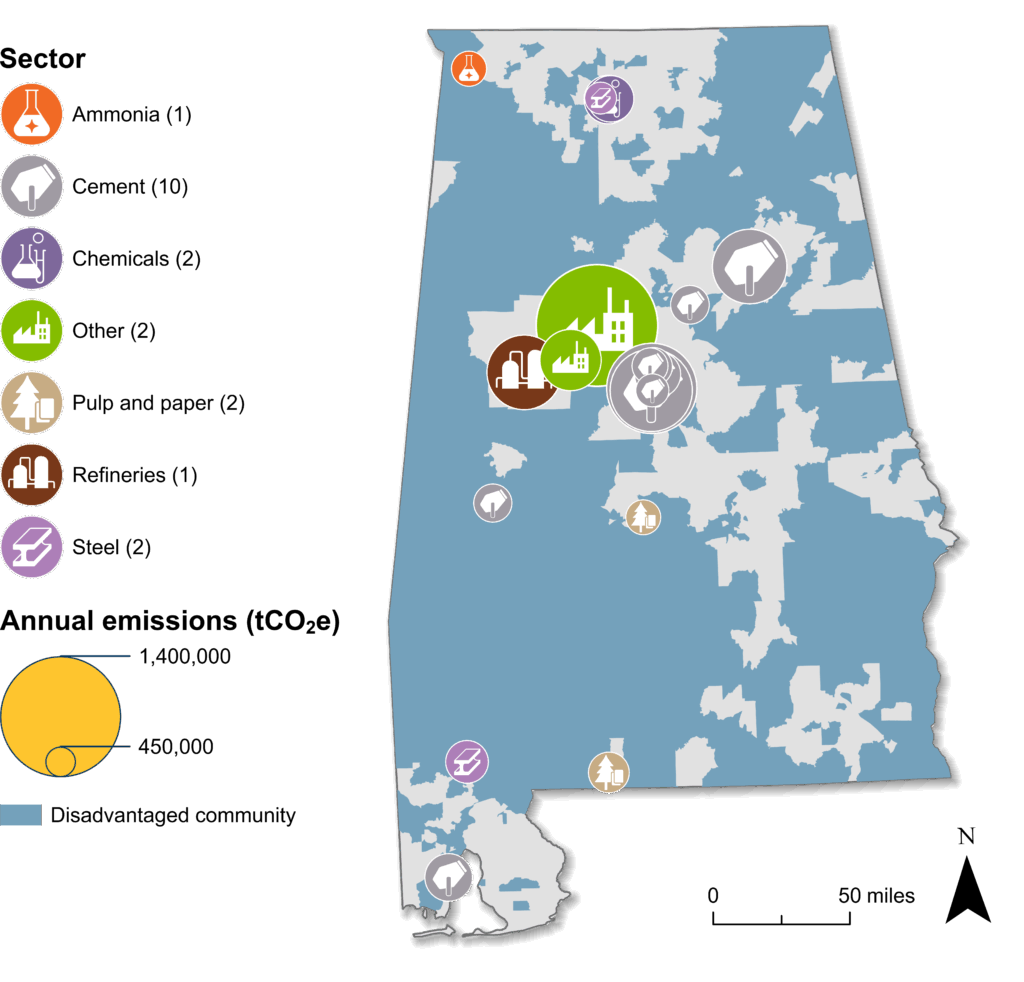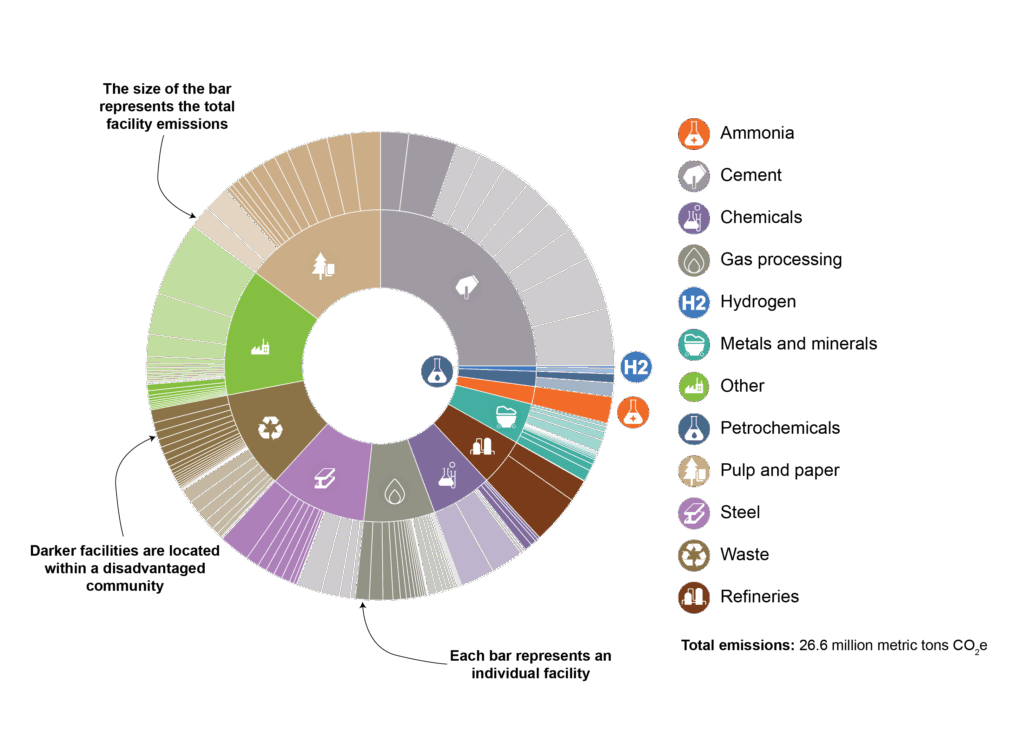Alabama
Alabama ranks among the top ten states in industrial emissions. Alabama has an exceptionally diverse industrial base and is a major producer of chemicals, metals, and pulp and paper. The state is home to large steel and cement/lime producers. Industrial activity is primarily concentrated in the greater Birmingham area. Decatur, Mobile, and Montgomery are also centers of industrial production.

- The top 20 emitters are shown on this map, coded by industrial sector. The size of the circles corresponds to emissions: the larger the circle, the higher the emissions.
- Disadvantaged communities (as determined by the federal government) are shaded blue.

- The inner circle provides a visual representation of the share of emissions generated by each industrial sector.
- The outer circle also indicates the share of a sector’s emissions generated in disadvantaged communities.
STATE ENERGY POLICY:
Considering a state’s broader energy policy landscape is helpful when developing policies to support industrial modernization. Alabama has not established greenhouse gas emissions targets, an electricity portfolio standard, or a clean heat standard. While these formal commitments are not prerequisites for innovative industrial policy, they can provide a supportive framework. In addition, streamlining permitting and establishing an efficient, transparent appeals process that engages local communities early while giving clarity and assurances to project developers are key components of effective state energy policy. Discussions around innovative industrial policy present an opportunity for broader conversations about state energy policy to ensure a mutually reinforcing strategy.
LEGISLATIVE context & opportunity:
Let us know if you are aware of additional legislation advancing industrial innovation in Alabama that should be featured. The context below is not exhaustive and serves as an example of recent policies and programs and where there may be future opportunities:
- Alabama recently enacted H.B. 327, clarifying surface and pore space ownership for geologic storage of carbon dioxide, creates an administrative and trust fund to manage open and closed storage facilities, outlines requirements for completion, and provides authority as it relates to leasing land for underground storage of carbon dioxide. These policies can help provide clarity for developers and investors, like this carbon capture and storage hub that will serve manufacturers, industrial producers, and power-generating facilities in South Alabama.
- A factsheet by the Renewable Thermal Collaborative identifies electrification of Alabama’s pulp and paper, plastic recycling, and soybean oil subsectors as opportunities to reduce emissions significantly.
Explore recent legislation in Alabama and all 50 states by clicking on a specific year: 2025 legislation, 2024 legislation, 2023 legislation.
